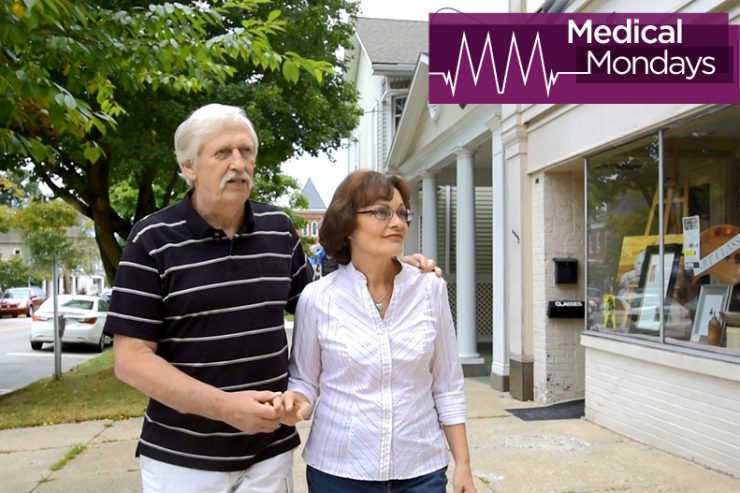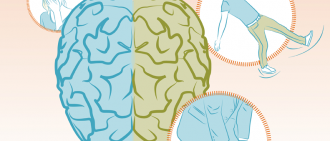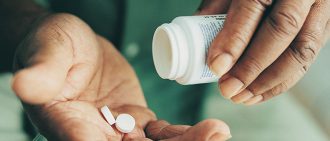Stroke is the leading cause of adult disability and the fourth-leading cause of death in the United States. After a person suffers a stroke, it’s critical that treatment start as soon as possible. For every hour’s delay in medical treatment, the brain loses 120 million cells. Typically, tissue plasminogen activator (tPA) is given at the onset of stroke to help dissolve clots blocking blood flow to the brain. But for strokes with large blockages, tPA may not always be effective. Now, stroke experts at UPMC are utilizing a groundbreaking treatment to treat strokes with large blockages and improve patient outcomes. This treatment is called endovascular thrombectomy (EVT), also known as mechanical thrombectomy.
Here, you’ll learn about:
- How tPA is used to treat stroke
- Why endovascular thrombectomy is used to treat strokes with large blockages.
- How thrombectomy works.
To learn more about strokes, contact the UPMC Stroke Institute to schedule an appointment or ask a question at 412-232-8840.
-
Use Your Head to Stop a Stroke
It’s a common misconception that only older adults suffer from strokes. In fact, a recent report by the American Stroke Association showed a sharp rise in hospitalizations among men and women ages 15 to 44, while rates declined by 25% among older adults. Read more to discover what you can do to prevent a stroke and what to do if you are faced with one.Learn More
-
Prevent Stroke Recurrence: Four Simple Ways
Each year, an estimated 1 in 4 strokes will happen to someone who has already survived one in the past. Thankfully, there are steps you can take to avoid falling into this statistic. Read more to discover four lifestyle choices that can help you reduce your risk of a stroke recurrence.Learn More
-
Endovascular Thrombectomy (EVT) for Stroke Treatment
While a clot-busting drug called tPA has been the main treatment option for stroke patients in the past decades, a new treatment option is proving more effective. The method, known as endovascular thrombectomy (EVT) with a stent retriever, was researched at UPMC and other facilities worldwide and is now approved for widespread use. Read more to discover the benefits and advantages of the thrombectomy procedure.Learn More
-
Stroke Symptoms in Women
Although symptoms like numbness or weakness in the face, arm, or leg on one side of the body, confusion, difficulty walking, or a severe headache are commonly reported stroke symptoms, research has shown women are 33% less likely to report such “classic” symptoms when they arrive at the emergency department than their male counterparts. Read more to discover how women experience stroke differently and the signs to watch for.Learn More
-
Infographic: Stroke Aftermath Issues
Dealing with the aftermath of a stroke can be challenging. Depending on the severity, symptoms can vary from weakness to visual problems to speech and language issues. Patients may even need specialized therapy to address acute problems. Read more to discover the common issues faced in the aftermath of a stroke.Learn More
-
Stroke Vs Heart Attack: Signs and Symptoms
Heart attacks and strokes are different medical conditions. But both occur when blood flow is interrupted — to the heart and the brain, respectively. Identifying the symptoms as soon as possible can help ensure immediate treatment. That, in turn, increases the chance of survival and lessens the likelihood of lasting damage and disability. Read more to discover the difference between a heart attack and a stroke — and what to look for so you can get the appropriate care.Learn More
-
Stroke Treatment Options
A stroke occurs when blood flow to the brain is interrupted. But many don’t realize there are two different types. As you might imagine, treatment depends on the kind you or a loved one suffers, whether ischemic or hemorrhagic. Read more to discover the treatment options for each type of stroke.Learn More







